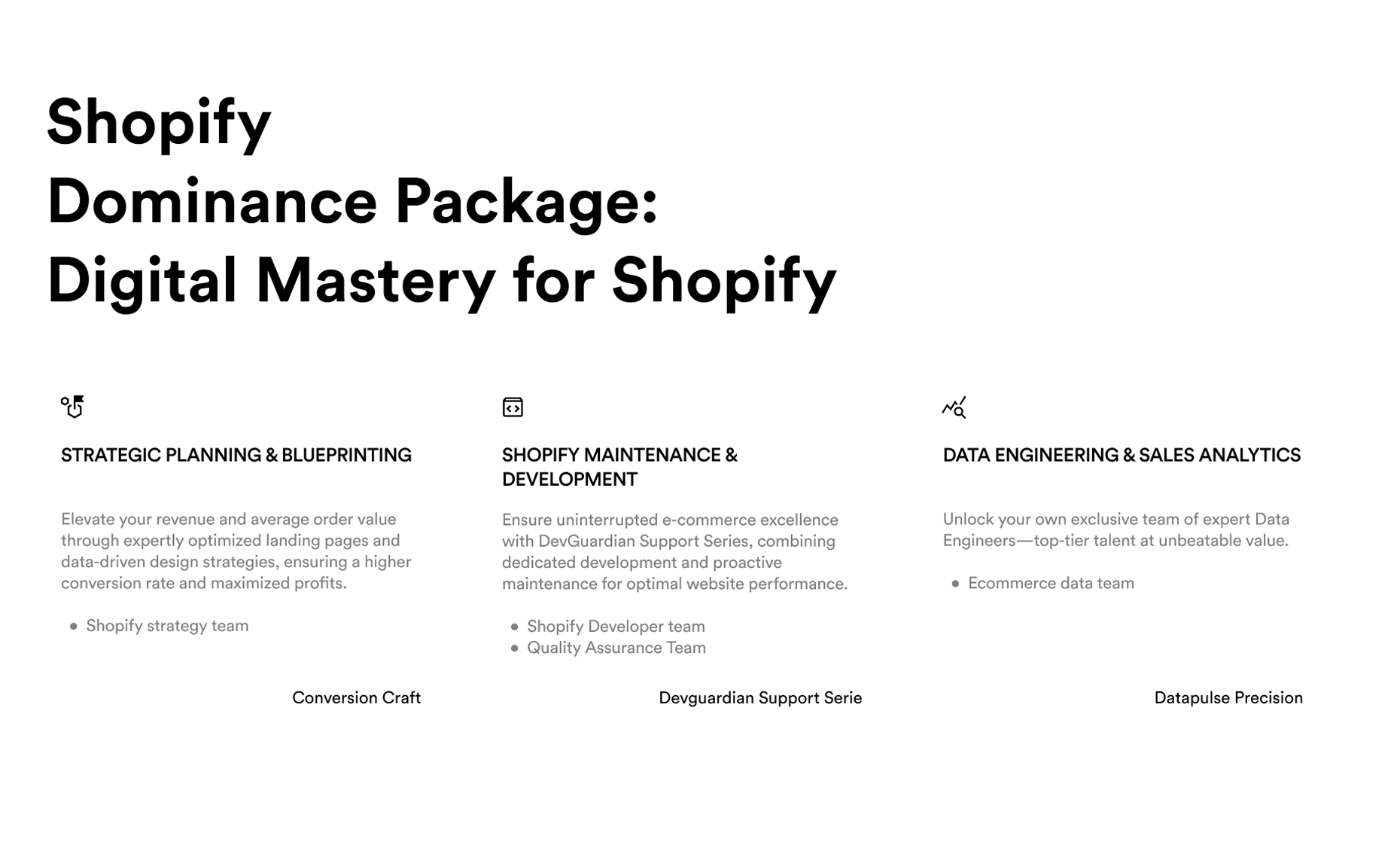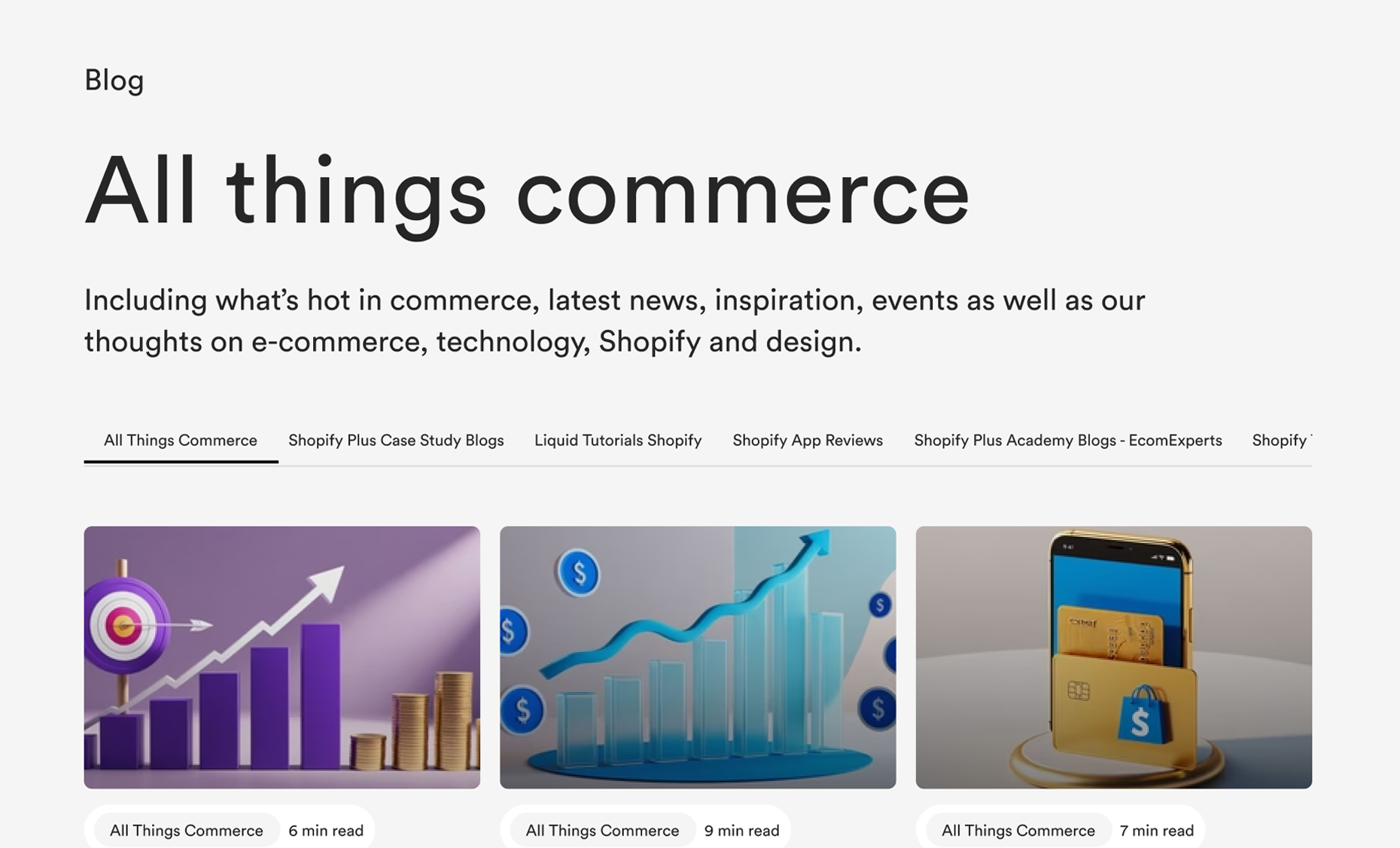Let’s be real: if you’re still only selling on Shopify in 2024, you’re leaving serious money on the table. Amazon owns nearly 40% of the U.S. e-commerce market, and that number isn’t getting any smaller.
While Shopify gives you control and lets you build your brand, Amazon is the powerhouse platform where millions of customers are ready to buy, like, right now. So why not take advantage of both?
Why Integrate Shopify with Amazon?

Alright, so why should you even bother connecting your Shopify store with Amazon? Simple: reach.
If Shopify is your home base, Amazon is the giant, bustling mall where everyone else shops. By integrating with Amazon, you’re plugging into an audience that’s already primed to buy.
We’re talking millions of customers scrolling, clicking, and making purchases daily. And in 2024, if you’re not where the people are, you’re missing out—big time.
Here’s the deal: Amazon’s marketplace gives your products instant exposure to a global audience, way beyond what you can get sticking solely to Shopify. Plus, Amazon shoppers are there for one thing: to buy.
They’re not window shopping; they’ve got their wallets out, ready to hit “Add to Cart.” You can piggyback off that momentum while keeping the control you love about Shopify.
Oh, and did I mention multi-channel fulfillment? Instead of running to the post office every time you get an order, let Amazon do the heavy lifting. Their warehouses, their shipping, your profits. It’s a win-win.
So, in 2024, expanding your reach by syncing up with Amazon isn’t just a nice-to-have. It’s essential if you want to grow without doing 10x the work.
Pre-Integration Steps: What You Need to Get Started

Before you can dive into integrating Shopify with Amazon and reaping the rewards, there are a few key things you’ll need to set up first.
Don’t worry, it’s not rocket science, but getting these steps right from the start will make your integration smooth and hassle-free.
1. Create an Amazon Seller Account
First up, you’ll need an Amazon Seller Central account. This is where all the magic happens—managing your listings, orders, and customer data.
If you don’t already have one, sign up for an account at Amazon Seller Central. You’ll have the option to choose between two plans:
- Individual Seller Plan: If you’re just starting and don’t expect more than 40 sales per month, this is your budget-friendly option. But keep in mind, you’ll be charged a small fee per sale.
- Professional Seller Plan: For more established Shopify stores with a steady flow of sales, this plan is the way to go. It gives you access to advanced selling tools and lets you sell in more categories, with a flat monthly fee instead of per-sale charges.
Pro Tip: Amazon has specific rules for certain product categories, like beauty and electronics. If you’re selling in a restricted category, you’ll need Amazon's approval before you can list those products. Check their requirements upfront to avoid delays.
2. Make Sure Your Shopify Store is Ready
Your Shopify store is going to act as the hub in this integration, so it needs to be in top shape. This means your product listings, descriptions, images, and inventory should be up-to-date and clean.
Why? Because any errors or mismatches will cause issues once you start syncing with Amazon.
- Clean up product listings: Make sure your titles are clear and match what you want customers to see on both platforms. It’s also important to ensure your SKUs are organized, as these will be used to map your products from Shopify to Amazon.
- Optimize your product descriptions: Amazon and Shopify have slightly different audiences, so tailor your product descriptions for each. Amazon customers tend to focus on clarity and features, while your Shopify site can have more personality.
3. Sync Inventory Across Both Platforms
One major pitfall for sellers is inventory mismanagement. Make sure your inventory is synced across both Shopify and Amazon, so you’re not selling products that are out of stock.
This is where multi-channel inventory management comes in. We’ll get into how to automate this later, but for now, just ensure your inventory on Shopify is accurate and ready to sync.
Once these steps are in place, you’re ready to integrate and start maximizing your reach across two of the biggest e-commerce platforms. Up next, the step-by-step guide to syncing Shopify with Amazon.
Step-by-Step Guide to Integrating Shopify with Amazon

Now that you’ve set up your Amazon Seller Account and ensured your Shopify store is prepped and ready, it’s time to get into the actual integration process.
This part might sound technical, but trust me, it’s simpler than you’d think—and once it’s done, your store will be synced, and you’ll be able to manage everything in one place.
1. Install the Amazon Sales Channel in Shopify
The first step in this process is to install the Amazon Sales Channel directly through Shopify. This tool is built specifically to connect Shopify and Amazon, making it easier to manage product listings, sync inventory, and handle orders across both platforms.
- Go to the Shopify App Store, search for the Amazon Sales Channel, and click "Install".
- Once it’s installed, you’ll be prompted to connect your Amazon Seller Central account. Shopify will guide you through the process of logging into your Amazon account and linking it to your Shopify store.
2. Connect Your Shopify Products to Amazon Listings
Next up is syncing your product listings between the two platforms. You’ll want to either map existing Shopify products to your Amazon listings or create new Amazon listings for products that aren’t on the marketplace yet.
- Existing Products: If you already have products listed on Amazon, Shopify allows you to map these existing listings to your Shopify products. Simply go into the Amazon Sales Channel within Shopify and select which products you want to link.
- New Products: If you’re selling new products that aren’t yet on Amazon, Shopify will help you create a new listing. You can fill out all the details—product name, description, price, and images—right from your Shopify dashboard, and it’ll sync directly with Amazon.
Pro Tip: Make sure your SKU numbers match up between Shopify and Amazon. This will ensure that your inventory stays in sync and avoids duplicate listings.
3. Manage Inventory Syncing Between Platforms
This part is crucial: keeping your inventory synced across both Shopify and Amazon will prevent overselling (which can lead to unhappy customers and negative reviews). Here’s how it works:
- Shopify will automatically sync inventory with Amazon so that if a product is sold on one platform, the stock count will be updated on the other.
- You can set inventory preferences within the Amazon Sales Channel settings. For example, you can choose to sync stock quantities only when certain thresholds are reached.
Keeping your inventory up-to-date is one of the biggest time-savers you’ll get from integrating these platforms.
4. Set Up Fulfillment Preferences
With the integration in place, you can choose how you want orders to be fulfilled. The beauty of Amazon is its multi-channel fulfillment (MCF) option, which allows you to use Amazon’s vast fulfillment network for both Shopify and Amazon orders.
- You can fulfill all orders through Amazon, whether the order comes from your Shopify store or Amazon’s marketplace. This means you can leverage Amazon’s fast shipping and customer service infrastructure, giving you more time to focus on growing your business.
- Alternatively, you can choose to fulfill Shopify orders in-house while using Amazon’s fulfillment services for Amazon orders. This is entirely up to your business model and resources.
Once you’ve synced your products and set up inventory and fulfillment, you’re ready to manage sales across two of the most powerful e-commerce platforms in the world.
Best Practices for Managing Shopify-Amazon Integration

Now that you’ve set up Shopify and Amazon to work together, it’s time to make sure you’re getting the most out of this powerful integration.
Managing two platforms simultaneously comes with challenges, but following these best practices can help streamline your operations and maximize your success.
1. Optimize Product Listings for Both Platforms
One major advantage of selling on both Shopify and Amazon is that you can cater to different types of buyers. However, the key is to optimize your listings for each platform.
- On Shopify, you have more creative freedom to tell your brand story and show off your personality. This is where you can really connect with your customers through detailed descriptions, high-quality images, and unique brand messaging.
- On Amazon, it’s all about clarity and features. Shoppers here want quick, clear information about your product. Keep your Amazon listings direct, feature-focused, and optimized with keywords for Amazon SEO. Be sure to follow Amazon's guidelines to avoid any listing issues.
Pro Tip: Use tools like Helium 10 to find relevant keywords for your Amazon listings. On Shopify, you can incorporate more branded and descriptive content that suits your customer’s journey.
2. Monitor and Sync Inventory Regularly
Inventory mismatches are a common headache when selling on multiple platforms. You never want a situation where a product is out of stock on Shopify but still showing as available on Amazon, or vice versa. This can lead to order cancellations, which damage your seller rating and result in unhappy customers.
- Make sure you’re using Shopify’s inventory sync feature so that both platforms always reflect accurate stock levels.
- Set up alerts or thresholds within Shopify so that when your inventory reaches a certain low level, you’re notified. This helps you restock in time before running out of products on either platform.
Regular monitoring of your inventory will help you avoid overselling and ensure smooth order fulfillment.
3. Keep Pricing Competitive on Amazon
Amazon is a competitive marketplace. Shoppers are price-conscious, and it’s easy for them to compare your products with similar offerings from other sellers. You need to ensure that your pricing remains competitive while also reflecting the value of your products.
- Consider using dynamic pricing strategies that adjust prices based on the competition, ensuring you stay relevant in search results and attract more buyers.
- At the same time, make sure your Shopify store pricing reflects your brand’s value. You may offer promotions or bundles on Shopify that give your customers more value than just a simple price reduction.
Keeping your Amazon prices competitive while maintaining the brand experience on Shopify is key to succeeding on both platforms.
4. Utilize Multi-Channel Fulfillment Efficiently
Amazon’s Multi-Channel Fulfillment (MCF) is a game-changer. It allows you to use Amazon’s vast warehouse and shipping network to fulfill both Amazon and Shopify orders. This can reduce your shipping times and give your customers a seamless experience.
- For Shopify orders, you can still offer branded packaging while using Amazon’s fulfillment network, ensuring your customers get the best of both worlds: fast shipping and a personalized unboxing experience.
- Evaluate the costs associated with MCF versus your own fulfillment. If it saves you time and resources, it may be worth fully adopting Amazon’s logistics.
Leveraging Amazon’s fulfillment network while keeping control over your branding can save you time and money while maintaining your brand’s unique appeal.
Potential Challenges of Shopify-Amazon Integration (And How to Overcome Them)
Integrating your Shopify store with Amazon opens up a world of possibilities, but it’s not without its challenges. Like any multi-channel selling strategy, there can be bumps along the way.
Let’s dive into some of the most common issues Shopify merchants face when integrating with Amazon—and more importantly, how you can overcome them.
1. Inventory Mismatches
One of the biggest headaches when integrating Shopify with Amazon is inventory mismatches.
If your inventory on Shopify doesn’t sync properly with Amazon, you risk selling items that are out of stock, leading to canceled orders and unhappy customers.
- How to Fix It: Shopify has built-in features to sync inventory across platforms, but it’s essential to stay on top of it. Set up low-stock alerts and ensure your SKUs (stock keeping units) match across both Shopify and Amazon. You can also use apps like SellBrite or Inventory Planner to keep stock levels in sync across multiple channels.
2. Pricing Discrepancies
When you’re selling on two different platforms, pricing can become tricky. Your Shopify store might have one pricing strategy, while Amazon is all about being competitive.
This can lead to pricing discrepancies, where customers see different prices for the same product on each platform.
- How to Fix It: Use Shopify’s Automated Pricing Rules to adjust your Amazon prices without impacting your Shopify pricing. This helps you stay competitive on Amazon while maintaining your Shopify store’s pricing structure. You can also manually adjust prices or use third-party apps to help manage this process.
3. Fulfillment Issues with Multi-Channel Orders
Using Amazon Multi-Channel Fulfillment (MCF) sounds like a dream—Amazon takes care of all the shipping and handling.
But what happens when fulfillment errors occur? Orders can be delayed, inventory can get misplaced, or your Shopify orders might not ship as expected.
- How to Fix It: Stay proactive by setting up order tracking and monitoring your fulfillment through Amazon Seller Central. If you’re managing your own Shopify orders outside of Amazon, make sure your fulfillment process is streamlined. Regularly check both your Amazon and Shopify fulfillment settings to ensure everything runs smoothly.
4. Dealing with Amazon’s Strict Policies
Amazon doesn’t mess around when it comes to its marketplace policies. Everything from your product descriptions to shipping speeds must meet their guidelines.
Failure to comply can lead to suspended listings or even getting kicked off the platform altogether.
- How to Fix It: Stay up to date with Amazon’s policies, especially around product listings, shipping, and customer service. Use Shopify’s Amazon Sales Channel to ensure your listings meet Amazon’s standards. Don’t cut corners when it comes to fulfillment times or customer reviews—Amazon’s algorithm loves reliable sellers.
5. Managing Customer Expectations
Selling on Shopify gives you full control over your branding and customer experience, but on Amazon, the playing field is different.
You may run into issues where customers expect Amazon-level service (like two-day shipping), even if you don’t offer it on your Shopify site.
- How to Fix It: Be transparent. Make sure your product descriptions and shipping details are clear on both platforms. If you use Amazon’s fulfillment services, take advantage of the fast shipping options, but if you’re fulfilling orders yourself, manage customer expectations by communicating shipping times upfront.
How EcomExperts Can Help with Shopify-Amazon Integration

Now, managing your Shopify-Amazon integration can be a game-changer for your e-commerce store, but it’s not always smooth sailing. That’s where EcomExperts comes in.
We know the challenges of scaling an e-commerce business, especially when juggling two major platforms. Whether you’re just starting with Amazon integration or need help optimizing your entire setup, EcomExperts has you covered.
At EcomExperts, we specialize in:
- Seamless multi-channel integration: We ensure that your Shopify store and Amazon listings sync perfectly, from inventory management to pricing, so you avoid costly mistakes like overselling or inventory mismatches.
- Customizing your Shopify store: Want your Shopify storefront to reflect your brand’s unique identity while still leveraging Amazon’s massive reach? Our team can customize your theme and optimize it for multi-channel success, making sure your Shopify store remains your brand’s stronghold.
- Improving fulfillment processes: If you’re using Amazon Multi-Channel Fulfillment (MCF), we can help streamline your order management to make sure your customers get fast, reliable shipping—whether the order comes from Shopify or Amazon.
The best part? We work with you to make sure your business grows on both platforms while maintaining the brand control you’ve worked hard to build on Shopify.
Shopify-Amazon Integration is a Must for Your E-commerce Growth in 2024
In 2024, selling on just one platform is a limitation no successful e-commerce business should have. By integrating Shopify with Amazon, you’re not only expanding your reach but also creating an efficient, multi-channel powerhouse that can serve a broader audience without overwhelming your operations.
The advantages are clear: increased sales, better inventory management, and the ability to leverage Amazon’s logistical strengths.
But it’s not just about connecting two platforms; it’s about building a sustainable, scalable system that grows with you. From inventory syncing to fulfilling orders faster, integrating Shopify with Amazon is a step towards creating a more agile and customer-friendly business.
If you’re ready to maximize your e-commerce potential, implementing this integration isn’t just a smart move—it’s essential.
Frequently Asked Questions About Shopify-Amazon Integration
1. Can I connect my Shopify store to Amazon?
Yes! Shopify offers an Amazon Sales Channel that allows you to directly connect your Shopify store with your Amazon Seller Central account. This integration helps you manage product listings, sync inventory, and handle orders across both platforms easily.
2. How do I sync inventory between Shopify and Amazon?
Inventory syncing is automated through the Amazon Sales Channel in Shopify. When a product is sold on either platform, the inventory is updated on both, ensuring that stock levels remain consistent and prevent overselling.
3. Does Amazon handle fulfillment for Shopify orders?
Yes, Amazon’s Multi-Channel Fulfillment (MCF) service allows you to use their warehouses and shipping network to fulfill orders from both your Shopify store and Amazon. This helps you offer fast shipping while outsourcing logistics.
4. Do I need separate product listings for Shopify and Amazon?
Not necessarily. You can use the Amazon Sales Channel to either map existing Shopify products to Amazon listings or create new ones directly from your Shopify dashboard. However, product optimization may differ between the two platforms to suit their audiences.
5. What are the benefits of integrating Shopify with Amazon?
Integrating Shopify with Amazon expands your reach by tapping into Amazon’s huge customer base, simplifies inventory management, and improves shipping and fulfillment processes. It’s an effective way to grow your e-commerce business while maintaining control over your brand on Shopify.












